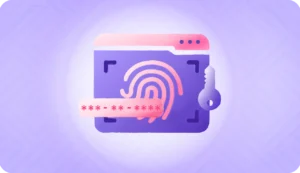Duplicate records are one of the biggest sources of identity fraud and theft. One of the most effective prevention countermeasures to check such activities is data deduplication. Deduping means the deduplication of data to remove extra copies and decrease the storage requirements. Data duplication can occur at multiple levels. According to IDC, 64.2ZB of data was created or replicated in 2020, and its impact will be felt for several years.
Data deduplication is not only a necessity in today’s digital footprint-heavy enterprises, it also acts as the first step to abate redundancies and reduces the burden on disk storage, costs, and data security. In this blog, we will take a closer look at various facets of data deduplication.
What is Data Deduplication?
Data deduplication is a storage-saving technique that identifies and eliminates redundant copies of data. Instead of storing multiple copies of the same data, deduplication retains only one unique instance of the data on storage media like disks, flash drives, or tapes.
The redundant data blocks are replaced with pointers to the unique data copy, significantly reducing the storage space needed. It aligns with incremental backup practices, which copy only the data that has changed since the previous backup.
Why Do You Need Data Deduplication?
Data deduplication helps to eliminate duplicate data blocks and store unique blocks of data. As per some estimates, organizations today are storing nearly double the amount of data every two years, than previously.
These cause redundancies, consuming up to 10-20 times more than the actual capacity needed for storage.
Moreover, enterprises can effectively stem the frauds that emanate due to data duplication with dedupe techniques. Considering the fact that data compromise leading to identity theft and frauds in the US jumped 68% in 2021, hitting an all-time high with a record 23% more than the previous year, enterprises need to step up their vigil with data deduplication. It is helpful in:
- Securing against identity fraud
- Preventing fraudulent payments made multiple times
- Maintaining financial and regulatory reporting integrity
- Saving storage, archival, and maintenance costs
- Enhancing customer experience by inspiring trust
Data Deduplication vs. Thin Processing vs. Compression: What is the Difference?
Data deduplication, compression, and thin provisioning are three distinct data reduction techniques that are sometimes used together but serve different purposes in data storage management.
| Feature | Data Deduplication | Thin Provisioning | Compression |
| What it does | Removes duplicate copies of repeating data. | Optimizes how storage space is allocated and used. | Reduces the data size by using algorithms to minimise the number of bits required. |
| How it works | Identifies and stores one instance of data, referencing back to it for subsequent copies. | Allocates storage space as needed rather than reserving large amounts that may not be used. | Applies data encoding techniques that shrink the size of data files or streams. |
| Where it’s used | Often used in backup and archive systems. | Common in storage area networks (SANs). | Can be applied universally to any type of data. |
| Benefits | Reduces the need for storage by eliminating redundancy. | Prevents over-allocation of storage, saving space. | Reduces data size, leading to lower storage and bandwidth requirements. |
| Considerations | Most effective with redundant data across the system. | Must be managed to ensure that overcommitment of storage does not occur. | While it reduces size, it does not eliminate redundant data copies like deduplication does. |
How Does Data Deduplication Work?
This whole process depends on the metadata database with inimitable hash storage of fingerprints of the unique blocks. These blocks are then matched and compared to filter and find duplicates.
There are various ways data duplication can be done, though primarily, two methods are followed: inline processing and post processing. In the first, data is filtered simultaneously as it is fed, and redundancies are captured and eliminated as data is stored.
While the post processing data deduplication method follows an asynchronous backup method to eliminate redundant data post storage. Duplicates are removed at the block level in the hash store.
Other types of data deduplication are:
- Fixed length deduplication
- Variable length deduplication
- Local deduplication
- Global deduplication
Since deduplication techniques vary from vendor to vendor and implementations, the results differ significantly.
Techniques to Deduplicate Data
Techniques for data deduplication are essential to optimize storage and improve data management efficiency. The main approaches include:
- Inline Deduplication: This method occurs simultaneously as data is being written to storage. It involves the deduplication engine tagging incoming data in real-time. The system must then quickly determine whether the new data matches existing data. If it does, a flag pointing to the existing data is written; if not, the new data is stored as it is. Inline deduplication is favored for its immediate impact on reducing data volume but can create additional computing overhead.
- Post-processing Deduplication: Also known as Asynchronous Deduplication, this method occurs after all the data has been written to storage. The deduplication system periodically scans and tags new data eliminates multiple copies, and replaces them with pointers to the original data copy. This can be scheduled during non-business hours to avoid affecting system performance. However, data is stored fully until the deduplication process runs, requiring more storage space upfront.
- Source Deduplication: This approach removes redundant data blocks before being sent to a backup target, either at the client or server level. It is efficient because it requires no additional hardware and reduces the amount of data that needs to be moved across the network.
- Target Deduplication: This technique is applied after backups have been transferred over the network to disk-based hardware at a remote location. While this approach may increase costs, it often provides better performance, particularly for large-scale data sets.
- Client-side Deduplication: A form of source deduplication, client-side deduplication occurs on a backup-archive client, removing redundant data during backup and archive processing before the data is sent to the server, which can significantly reduce the data transfer load on the network.
Benefits and Drawbacks to Data Deduplication
The benefits of data deduplication are significant and multifaceted. They include:
- Decreased Storage Space Requirements: Deduplication can drastically reduce the amount of storage needed, sometimes by up to 95%. This reduction depends on the data type and can lead to substantial cost savings and increased bandwidth availability.
- Backup Efficiency: Redundancies in backup data, particularly full backups, are common. Deduplication technology helps identify duplicate files and data segments, significantly lowering backup storage requirements.
- Continuous Data Validation and Recovery: Deduplication can improve data recovery services, making the process of backups and restores quicker than with incremental backups, which often require scanning the entire database for changed data blocks.
However, data deduplication also comes with potential drawbacks:
- Risk of Data Loss: In rare instances, hash collisions can occur where the deduplication system mistakenly identifies new data as redundant because it shares a hash number with existing data, potentially leading to data loss. Providers use various strategies to minimize this risk, such as combining hash algorithms and examining metadata to identify data correctly.
- Computational Overhead: Inline deduplication can create computational overhead, as the system needs to constantly tag incoming data and compare it to existing data to determine redundancy.
- Storage Overhead: Post-process deduplication requires a larger storage capacity overhead at all times, as data is initially stored in its entirety and only reduces in size after the scheduled deduplication operation is completed.
Use Cases of Data Deduplication
Data deduplication has a variety of use cases, which can be broadly categorized into enterprise and backup solutions. Here’s a detailed look into several scenarios where data deduplication is particularly beneficial:
- Backup Solutions: Data deduplication is integral in optimizing backup solutions, especially in environments with significant amounts of duplicate or similar files. It is most effective when dealing with large volumes of identical data segments. For example, in situations with frequent full backups and moderate to low data change rates, deduplication can result in impressive storage savings, with data reduction ratios ranging from 5:1 to even 20:1 in some cases.
- Remote Offices: For remote offices that lack onsite skills to manage backups, deduplication can simplify data management. A dedupe-capable disk array can serve as the primary storage target, removing the need for manual tape management and enabling replication of deduplicated data across the WAN. This reduces the network bandwidth required, making it a cost-effective alternative to disk mirroring and eliminating the issues associated with frequently failing or missed backups.
- Enterprise Data Management:
- Insurance and Healthcare: Deduplication can help manage and analyze large data sets, identifying duplicate claims or patient records.
- Financial Services: Financial institutions use deduplication to detect and prevent fraud. For instance, a bank used deduplication to avoid $10 million in fraud by identifying duplicate loan applications.
- Technology and Governments: These sectors can employ deduplication to manage digital data more effectively, such as verifying identities and maintaining data integrity for regulatory purposes.
- Media Handling and Space Reclamation: In environments with tape libraries nearing capacity, deduplication can reduce the need for physical media handling. By replicating deduplicated data, it’s possible to eliminate the need for offsite media handling and reduce the associated costs. Furthermore, deduplication allows for the reclamation of data center space, as it can replace large tape libraries with smaller-footprint disk arrays.
- Upgrading Tape Technologies: Organisations considering updating their tape technologies might find disk deduplication a worthy alternative. Disk deduplication does not necessitate a full replacement but can be integrated into existing systems to enhance data management and storage efficiency.
Real-Life Example of Deduplication
A real-life example of data deduplication can be illustrated through an everyday email system. In many organizations, it’s common for multiple instances of the same file attachment to circulate within the email system. If an organization’s email platform is backed up or archived without deduplication, every instance of an attachment is saved, consuming storage space for each copy.
For instance, 100 instances of a 1-megabyte (MB) file would require 100 MB of storage space. With data deduplication, only one instance of the file is stored, and all subsequent instances merely reference the saved copy. This means the storage demand for the 100 instances of the attachment would drop from 100 MB to only 1 MB, demonstrating a significant reduction in required storage space.
How Can You Get Started With Data Deduplication?
There is no right or wrong data deduplication strategy. It is better to assess the suitability with respect to the existing IT ecosystem and determine the framework that can offer better integration with minimal changes. Here are a few tips to help you get started by choosing the right deduplicating approach.
Step 1: Analyse Your Existing Data Backup Framework
Every enterprise faces different external and internal factors. The deduplication ratio, too, may vary accordingly. Analyzing the complete data backup process accurately may take some time, but it’s advisable not to hasten the process.
The main factors influencing the deduplication ratio are:
- Data type for deduplication
- Data variability rate or change rate
- Size and amount of redundant data
- Backup method employed (full, incremental, or differential)
- Size of backup data
Step 2: Understand The Scope Of Alteration In The Backup Environment
The approach selected for backup storage influences the deduplication ratios. A faster backup will result in a higher ratio. Questions you can ask are:
- What is the scope of changes that can be made in the current backup environment?
- How can the deployment of data deduplication be done with minimal changes?
- Can the software be rolled out across regional and global offices, if needed, with the existing hardware and IT infrastructure?
Step 3: Review Performance During Backup And Integration
The backup using process, especially, the first time, can be challenging. It may take a significant amount of time to perform the backup and integrate it with the current IT systems. You may observe that:
- The total amount of data and changes will influence both backup and integration
- Usage of additional hardware and software with the data deduplication software will also have a bearing.
Choosing HyperVerge: Better RoI And Superior Tech
HyperVerge is the market-leading AI company that has helped enterprises to improve and automate their processes, provide better customer experience, and digitally adapt at a quicker pace. Ranked by the world’s top agencies for advanced AI capabilities to identify frauds, we have helped several global financial institutions to reduce risks and identity theft while maintaining the efficient processing of documents and services.
Leading lenders in different territories in India, Vietnam, Malaysia, Singapore, and the United States have been able to save $50 million from fraud annually with HyperVerge. Some of the world’s largest entities like CIMB, Home Credit, and Grab, trust us to help them combat fraud risks.
Conclusion
Data deduplication is more than a space-saving feature. While it is not a one-size-fits-all solution, particularly for compressed or encrypted data, its integration within data centers and remote office backups presents a compelling case for organizations looking to optimize their digital ecosystems. It yields cost savings and efficiencies, in the long run, not to mention thwarting fraud risks significantly through identity verification services. It also cuts down compliance and regulatory risks.
FAQs
1. Why do we need deduplication? What are the risks of duplicate data?
Data deduplication reduces redundancy, saving storage space as data volumes grow. This also helps prevent fraud in enterprises
2. Is data deduplication software suitable only for financial institutions?
No, the software can be deployed by the enterprise at the risk of third-party identity theft and fraud risks.
3. Does data deduplication hamper digital transformation?
No, data deduplication can be part of a digital transformation initiative as the outcome may influence long-term results.
4. Does it require significant investments?
No, it depends on the existing data backup methodology. Normally, the software can be integrated easily, co-existing with the enterprise IT systems.





















